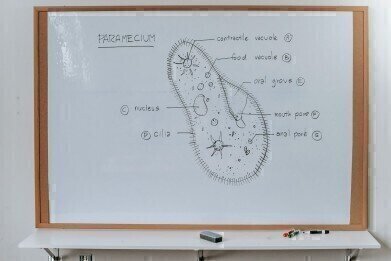News
Do Vampires Exist? Taking a Closer Look at Amoebas
Dec 20 2014
Most of us are familiar with vampire stories. From Stoker’s gothic Transylvanian horror to Meyer’s fantasy teenage romance, Twilight, we’d know to pack garlic, crosses, and silver if we were to venture into vampire territory, and that nothing but a wooden stake to the heart would save us from a hair-raising, blood-sucking demise.
While this is, of course, all fantasy, you may be surprised to learn that there is probably a vampire feeding on its prey within a few metres of you. No, we’re not talking about an undead Count or fanged teenager who sparkles in sunlight - we’re talking about vampire amoebas.
The discovery of Vampyrella
First characterised in 1865 by the Russian biologist and one of the founders of microbiology, Leon Semenowitj Cienkowski, Vampyrella are a species of single-cell microbes which attack algae, extracting their contents by breaking through their cell wall. Their name, of course, was chosen due to their striking resemblance to vampires in folklore.
Several other species have been identified - known collectively as vampyrellids, and are now thought to belong to a tremendously diverse single-cell organisms group called Rhizaria.
It was recently discovered that vampyrellids attack not only algae, but fungi and even multicellular animals such as nematode worms. When food sources are scarce, vampyrellids can also merge together into larger structures, which allows them to travel further in search of food. Once they have sucked out the contents of their victim, vampyrellids envelope themselves in a solid wall known as a cyst, and remain in a motionless state for up to two days while they digest. During this time, the cell may also divide, thus resulting in two vampire amoebas when the cyst reopens.
What role could vampyrellids play in the future of biofuels?
Over the last 150 years, Vampyrella have fascinated scientists with their grisly feeding habits, and continue to be a source of much research. Their biggest mystery, however, still remains unsolved: how do vampyrellids break through the tough cell wall of a bacterium?
Scientist Sebastian Hess and his colleagues from the University of Cologne, Germany are hoping to uncover the science behind the perforations, believing it to be a chemical reaction.
Speaking with the BBC, Hess said, "The perforation of the cell wall… can be done in five to ten minutes...They must have a set of enzymes which can digest plant cell walls," he says. "I'm starting to look at that."
Hess believes that this mystery may prove helpful to the manufacturing of biofuels from algae; an almost zero-carbon fuel source for cars. It is currently extremely difficult to deconstruct algae cell walls to retrieve the energy-rich sugars within which are used to create the biofuels, but the process performed by vampyrellids may shed light on the issue.
If you enjoyed this news story, you’ll find lots of fascinating topics here on Labmate. For example, have you ever touched a 3D hologram? Did you know that the Death Star’s tractor beam might just be possible? And have you ever wondered what causes the colour of gemstones? You can find all this and more right here. Enjoy!
Digital Edition
Lab Asia Dec 2025
December 2025
Chromatography Articles- Cutting-edge sample preparation tools help laboratories to stay ahead of the curveMass Spectrometry & Spectroscopy Articles- Unlocking the complexity of metabolomics: Pushi...
View all digital editions
Events
Jan 21 2026 Tokyo, Japan
Jan 28 2026 Tokyo, Japan
Jan 29 2026 New Delhi, India
Feb 07 2026 Boston, MA, USA
Asia Pharma Expo/Asia Lab Expo
Feb 12 2026 Dhaka, Bangladesh



















